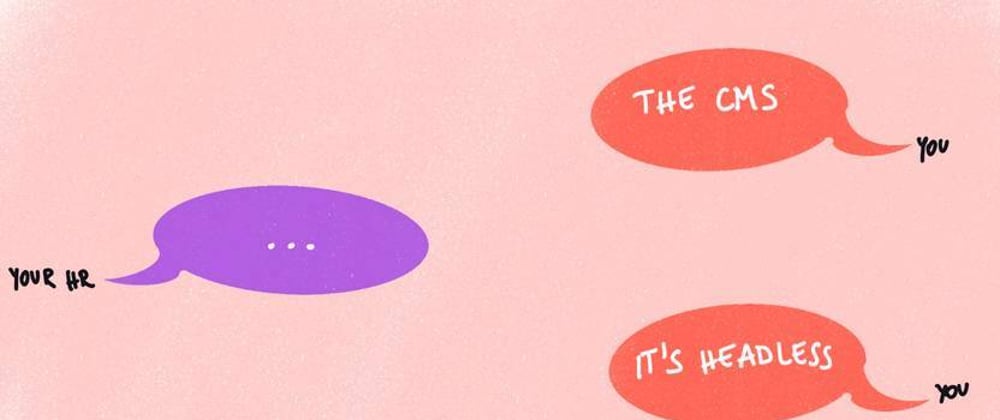Headless CMS is not a design tool, so how can it help web designers?
Users prefer sites that are engaging, load fast, and are distinctive; here are the facts:
- 88% of visitors leave a website if it is loading slowly.
- 62 out of 100 visitors quickly see when a website has a bad UX. Or, in other words - you can’t easily hide a slow & poorly designed website from your visitors ;)
- Only every third user used a PC to access the Internet in 2021. Yet, somehow, developers and designers primarily focus on bigger screens, while mobile phones are a (not-so-new) new standard. Did anyone notice when did this switch happen?
This data is important and should be used as a guide in every user interface design and user experience design process.
Speaking with a lot of designers, I’ve put together a list of the most frequent questions they usually ask, when it comes to choosing the best CMS for a website they are designing.
Designer: What is a Headless CMS and how does it work?
Headless content management systems became leading when traditional CMSs weren’t enough to create fast, uniquely designed, and powerful modern websites.
Traditional CMSs like WordPress, Drupal, and Joomla let users design their websites within the CMS. In most cases, their built-in visual builder features are not enough, so users and developers are installing a lot of additional plugins, that help speed up and simplify the website production process, but in essence, make websites much slower, less scalable, insecure, and hard to maintain.
Headless CMSs, on the other side, don't have any front-end components or "head" to determine how the content should be displayed. Headless CMSs serve as a content repository from where you can consume content via API - anywhere you want.
Read more about the differences between Traditional CMSs and Headless CMSs.
Designer: What’s better, a Headless CMS or WordPress?
Many people wonder if Headless CMS is a WordPress alternative, but the truth is that it just represents the next phase of content management systems.
WordPress is the most known CMS out there. It powers 43% of all the websites on the Internet. WordPress is the most famous for its long list of themes, plugins, and patterns which help developers build their websites faster, sometimes even without technical knowledge.
For these reasons WordPress gained popularity, but it seems that what makes it popular may be at the same time one of its biggest drawbacks. All those themes, plugins, and patterns are pre-built packages of functionality. In this case, pre-built means that you can create whatever kind of site you want or need, but only within the framework set by WordPress itself.
How does Headless CMS deal with all that?
In Headless CMSs nothing is predefined. There are no themes, no templates or color schemes, and no plugins which give developers, designers, and content creators the freedom to make their projects the way they want, without limitations.
You can design different layouts, frames, and text boxes for different content types. Nothing is uniformed by default unless you want it to be. Every page can have different colors and shapes, there is no mold.
(Photo)
Learn more about Headless CMS vs WordPress
Designer: Does Headless CMS have any design constraints?
To keep it short & clear: There are absolutely no constraints. The headless content management system is a software that you use for, and only for any kind of content you need on your website (or other platforms.)
Why would designers like the headless CMS setup?
- Creative freedom
Changes to the front-end of a website in a traditional CMS setup can have a significant impact on the back end. In some cases, changes to the front-end may require the involvement of the backend development too.
Design and front-end teams can take complete control of their website's look, feel, and user experience with a headless CMS, all without involving back-end development.
- Easier maintenance and updates
Conventional CMSs such as WordPress can have major conflicts with plugin updates and themes - headless CMSs are free of these issues.
Developers can keep both front-end and CMS running smoothly separated. Furthermore, marketing, writing, and design teams can quickly update sections on the website without waiting for developers’ help.
- Parallel development
Dependencies between front-end and back-end systems can be one of the biggest slowdowns in web development. The design team cannot implement designs and the content team cannot write until the backend team has finished building frameworks. A headless CMS eliminates these dependencies and allows teams to work simultaneously without having to worry about how the other side is doing.
Headless CMS Features
Here are some general features of Headless CMSs that useful for designers
- Structured content and Content Modeling
- Content Editing
- Improves collaboration between different teams on the project
- Multi-language support
- Image Editing
Read the complete list of Headless CMS features before you decide to implement CMS on your project.
Okay, using Headless CMS helps with the in-team challenges. But what about collaboration with the clients? If you want to know how Headless CMS can help you with your clients. continue to read this text here https://s.thebcms.com/blog/explaining-headless-cms-to-web-designer.







Top comments (0)